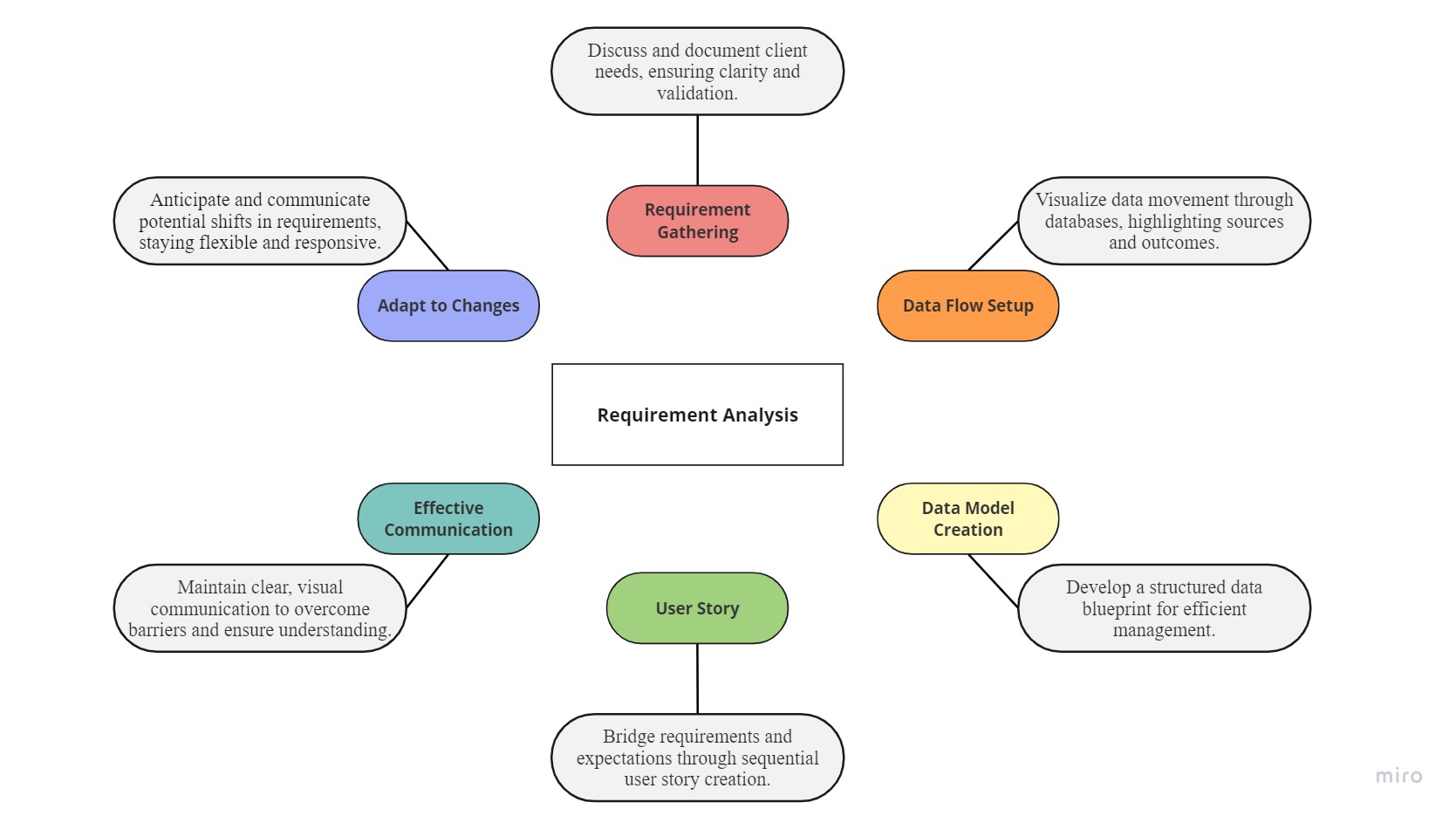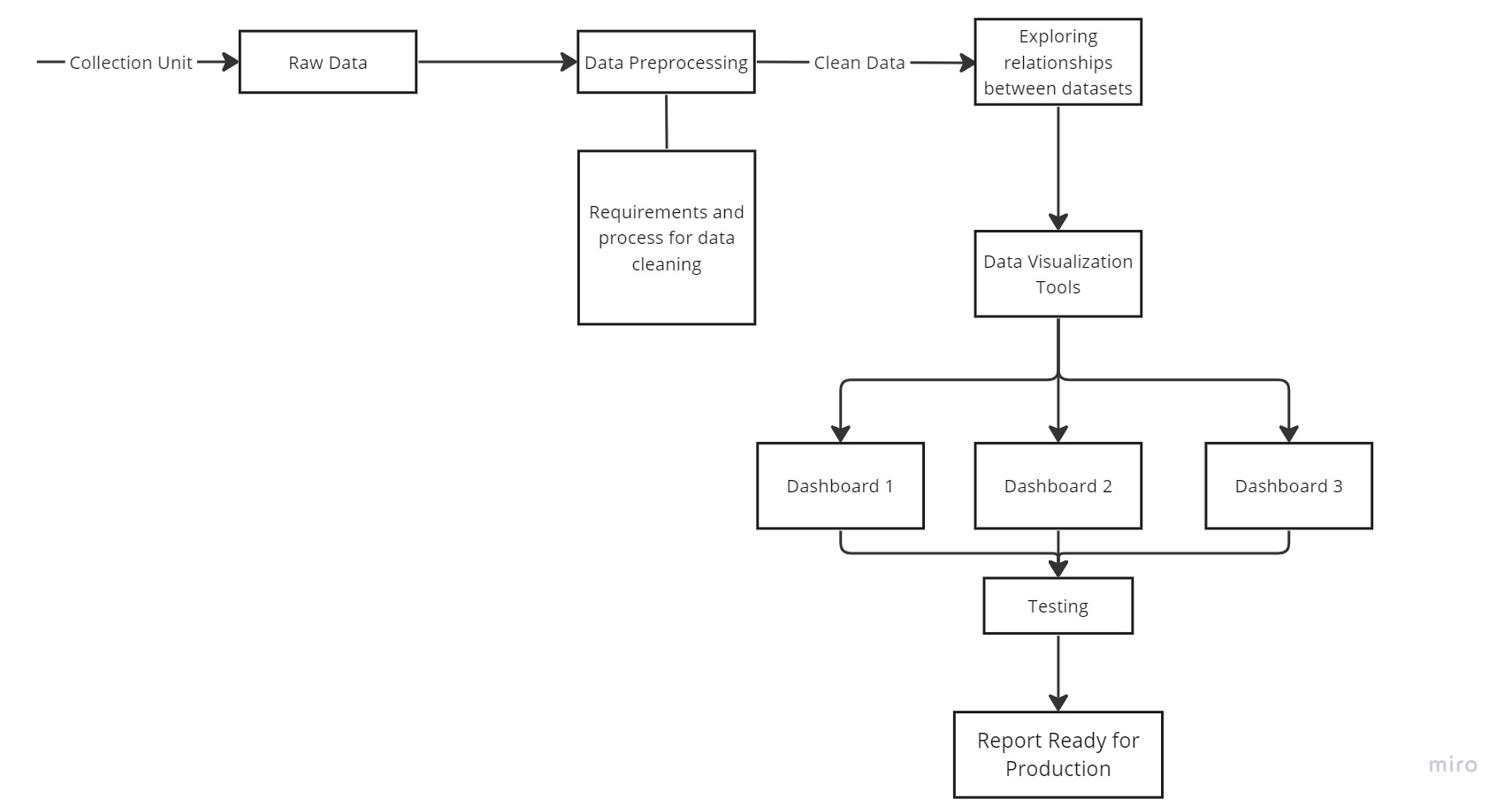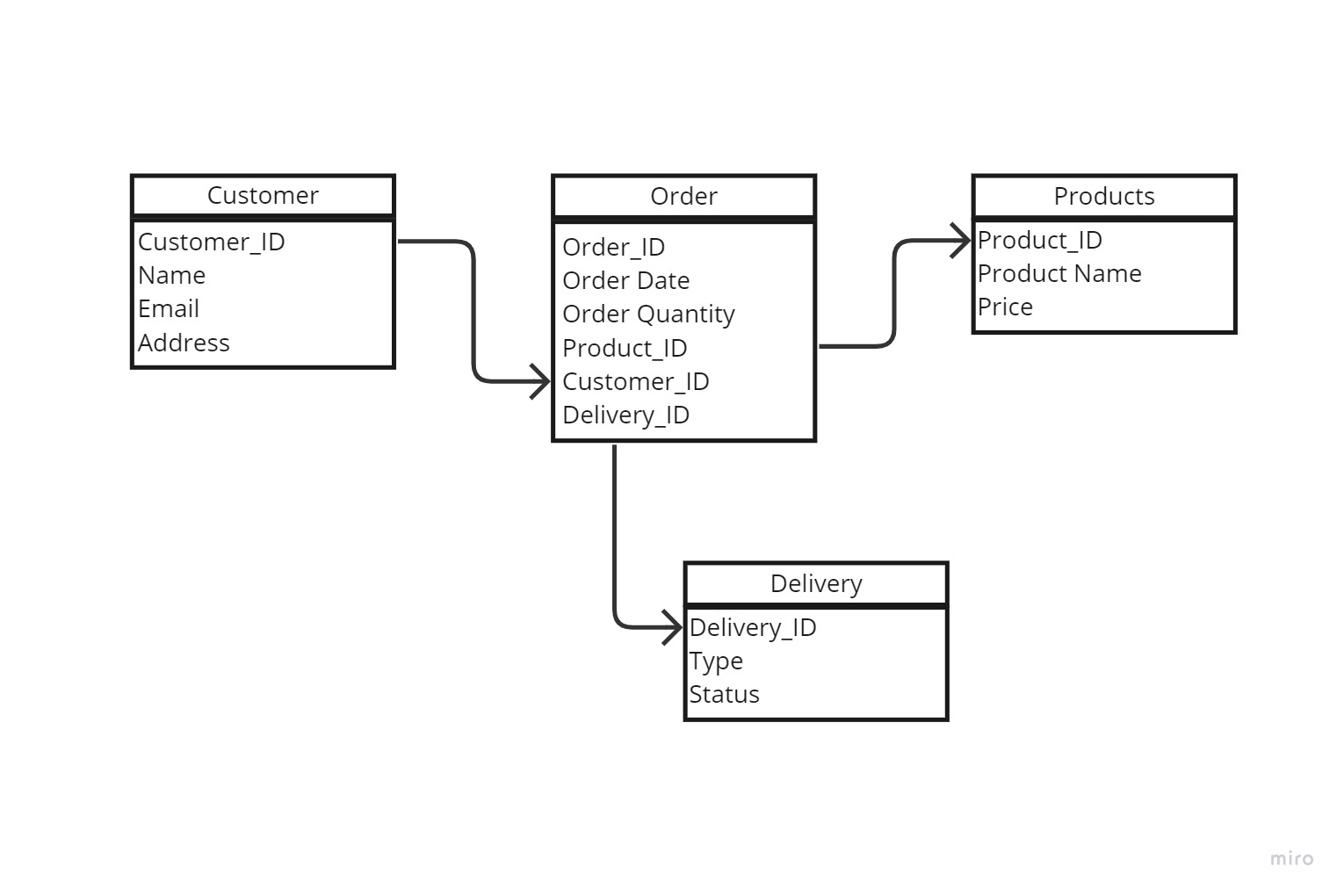Introduction
Welcome to the first part of our series on Requirement Analysis. Here, we’ll unravel the fundamental concepts and importance behind this crucial phase in project development. Understanding client needs is central to this exploration, as it drives the whole process of requirement gathering and project planning.
Every project you work on, every analysis you prepare, it has to be based on business needs. The purpose of you delving deep into the data, has to have a strong output. This is why, whenever you set out for a project work, all the sets of requirements must be taken under consideration. Importance of requirement analysis is thus underscored as a foundational practice.
Requirement analysis is the most important part of building up a project. It gives us a clear idea and complete knowledge about what is to be delivered. It’s like when you know what to do, then half the work is done. In this light, employing software development service experts ensures that technical and operational specifications meet business requirements effectively.
Imagine you are taking a road trip. But you’d never just get in the car and go, of course. You plan a route first, right? This is how requirement analysis works. It serves like a roadmap for a project, so we do not get lost mid way, and everyone involved knows where we are headed. This planning phase is where we often hire a dedicated team to focus intensely on high-quality outputs.
Requirement analysis is getting to know what are the things which should be considered while developing the project such as the conditions which should be addressed, the questions which need to be answered and the message which should be delivered. It’s crucial for managing client expectations to ensure that the final product aligns with their visions and requirements.
It is best to take some time and understand all the requirements at the initial stage before going into the development part. Because, if we overlook a certain requirement and find an issue at a later phase, then it will be our loss, and even worse if we detect it in the testing phase. Engaging offshore developers at this stage can provide additional insights and help refine project scope effectively.
To be clear about all the requirements, you need to have a proper discussion with the client and note down everything the client states about the project. It is important to understand the client’s needs out of the whole process first and then move forward with how each part of those requirements should be achieved. Client engagement in project planning plays a critical role here to ensure all stakeholders are aligned.
There are certain ways which can help keep all the requirements in check and make sure each of them is addressed. The application of Entity-relationship diagrams during this phase helps in visualizing data relationships and structures, which are crucial for data-intensive projects.

Listing out all the requirements:
- It helps in seeing the bigger picture and setting up a strong foundation for a project. Conducting discussions and meetings with the client helps him get to know our capabilities and we can have a comprehensive understanding of their expectations. Proper Project planning and analysis is vital in this context, providing a clear path forward.
- The purpose, scope and dependencies of all the requirements should be documented. Also, we should test it out with our clients to see that what we offer is precisely counterweighted by their requirements.
Preparing the data flow
Now we need to set up data flow. This is required to set up the structure of information, so we can see exactly how it flows into these databases. This shows where the data comes from, how it is used and at what stage in its processing external sources of information have to be brought into play. And more importantly, this tells you precisely what ends up coming out the other side of these steps.
Example of data flow:

Preparing the data model
- Data modeling in projects provides a methodical approach to handling this data efficiently and accurately.
- Data Model acts as a blueprint of how the data is organised and structured. It ensures the ease of data management.
- To specify the data we will store, along with providing a model to help us understand what our various datasets are related by, entity-relationship (ER) diagrams provide visual representations of relationships between different sets.
Example of data model:

Preparing a user story
- User stories help in bridging the gap between requirements and expectations. It should be mapped out in a sequential flow to understand the whole journey. When you working on a data analysis project to prepare a visualization out of raw data, then user story is making rough sketches of tentative ideas of what those visualizations will be and what questions each part of the dashboard is going to answer.
- The client should be involved in validating this user story you have prepared to ensure that it aligns with the intended objectives and also it is standing by the acceptance criteria. Risk management in project development is thus crucial, as it helps to foresee and mitigate potential issues in implementing these user stories.
Communication
- “Communication is the key”, this phrase is true for all aspects of life, including project management. Throughout the project, starting with requirement analysis, each and every step should be communicated thoroughly with all the team members as well as the client. A concise, clear report should be maintained so that everyone will know the state of the project. Visual aids like charts, graphs, or any other feasible cues should be used to ease understanding.
- Additionally, there are instances where communication barriers occur in understanding of the development process. For example, if a client comes from a non-technical background and requires self-sufficient software architecture such as for installation management, how to explain all the steps becomes very difficult. Or this obstacle may come from dissimilar tastes or preferences.
- To avoid the above communication barrier – it’s important to keep things clear and simple. We can use common language, steer clear of specialized jargon and use examples or pictures to make the idea clear. To be sure about the understanding, we must work closely with the team and the client, to define and document requirements, and encourage regular feedback to catch misunderstandings at early stages of the project.
- Understanding non-technical client requirements is essential to make this process inclusive and effective for all parties involved.
Adapting to dynamic changes
- Sometimes, you may face situations when the development process begins, and then the client tends to understand what they actually need and the requirement changes accordingly. One of the ways to tackle this is, you need to have thorough communication with your client beforehand – let him know all possible outcomes from the analysis. Not only what will be done but also other things that can be nominated. You should give a detailed overview to the client about everything that can be wield out using data.
- However, if it’s not suitable in certain cases, then take a moment to ruminate; look back and see what worked–and how much better we can do the next time.
- Agile methodologies in requirements gathering offer flexibility and adaptability to such dynamic situations, enhancing the project’s ability to evolve with changing client needs.
- Techniques to make your Requirement Analysis phase a success:
- Document Analysis:
- Gather all the documents related to the project and thoroughly review each one.
- Examine the previous work done in the project to understand how to plan its progression.
- Read all the formal requirements stated in the documents, and comprehend and acknowledge each one. Identify connections among the requirements and between the documents and your existing knowledge.
- Determine areas where you can apply previous learnings and those where additional effort is needed to complete the project successfully.
- Document queries and questions in detail, along with potential solutions or suggestions to present to the client later.
- Shadowing:
- Envision yourself as the end user, for instance in a data analysis project, imagine being the person who will use your reports and dashboards.
- Ask questions to yourself like whether the visualizations effectively address all the requirements, if features applied are convenient for everyone to use, and if certain graph functions are necessary or just contributing to clutter.
- This perspective allows you to view the project from multiple angles and offer better solutions for the specified requirements.
- Group Discussions:
- Conduct detailed group discussions with your entire team. Explain every point you understand about the requirements and share your proposed solutions.
- Understand your team members’ perspectives and gather different outlooks on the situation.
- This collaboration can unveil points that may have been missed when working alone. Reflect on each point discussed and design your solutions accordingly.
- Interviews/Discussions with Client:
- Conduct an interview with the client to address all the questions lingering in your mind.
- Avoid assumptions and inquire about every minute details.
- Based on the client’s responses, ask follow-up questions until you have complete clarity about the requirements.
- Discuss your suggestions and inputs for the project, ensuring clarity on whether the client is willing to include them.
- Prototyping:
- Create a prototype representing your envisioned solution. Include all aspects you want the project to encompass.
- Share it with the client, discussing each part to maintain transparency regarding your thoughts about the project.
- Allow the client to take the final call. It would greatly benefit the client in visualising the output for all the time and effort that is to be invested in the project.
- Document Analysis:
In summary, requirement analysis is very important to the success of a project. It leads teams in the right direction–towards business necessities and increased productivity. And it also serves to reduce risk and strengthen preparedness.
As we wrap up this exploration, anticipate the next chapter where we’ll delve into the practical side of Requirement Analysis. Subscribe to our newsletter to get notified as soon as the next blog is live. This not only keeps you in the loop but also helps other readers, like yourself, discover and benefit from this content.
If you have any questions or queries and need solutions and guidance, comment below or contact us personally. We’re more than happy to assist you and work towards answering all your questions. It could even be an opportunity for us to learn something from you.
Feel free to reach out to us on https://www.augustinfotech.com/contact/
Let’s connect and build a network of shared knowledge!






